Book Printing: Perfect Binding vs Saddle Stitch
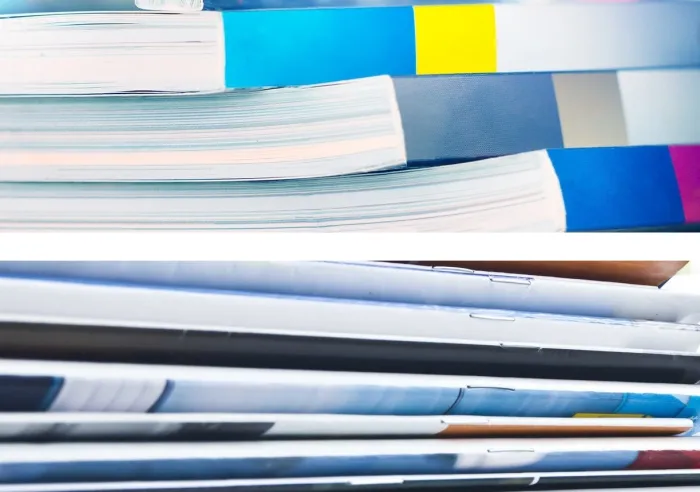
estimated reading time: 5 minutes
Perfect Binding and Saddle Stitching are the two most prevalent
methods for binding softcover books. In fact, both methods are used for a wide variety
of book types, including manuals, catalogs, magazines, comic books, coloring
books, journals, and directories.
Since knowing the characteristics of each binding style will
help you decide which is better suited for a particular book project, below is a
quick overview of these two binding methods followed by a comparison of each book's features.
What is Perfect Binding?
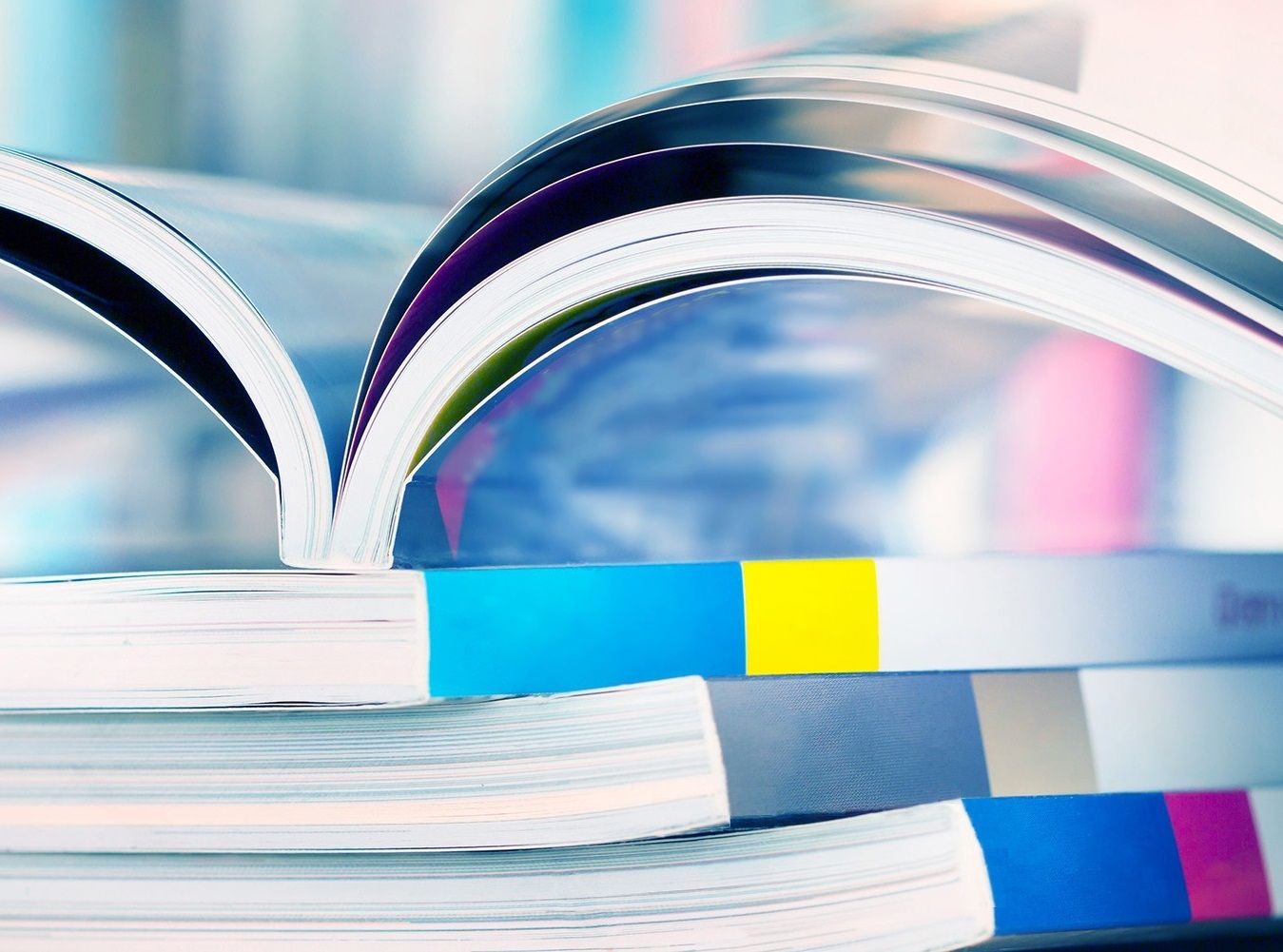
The Perfect Binding method uses a strong, flexible adhesive
to secure a book's cover and pages. After the pages have been printed, they are
collated into a crisp stack known as the page block. Each sheet within the
block creates two pages of the book.
After the page block is assembled, the spinal edge is notched or "roughed up" to expose more paper fibers. This is done so the adhesive can make a stronger bond. After the adhesive is applied to the spinal edge of the page block, the printed cover is wrapped tightly over it.
The
adhesive bonds the pages and cover securely together at the spine. After the
adhesive sets, the three open sides of the book are trimmed to create clean
"perfect" edges.
What is Saddle Stitch Binding?
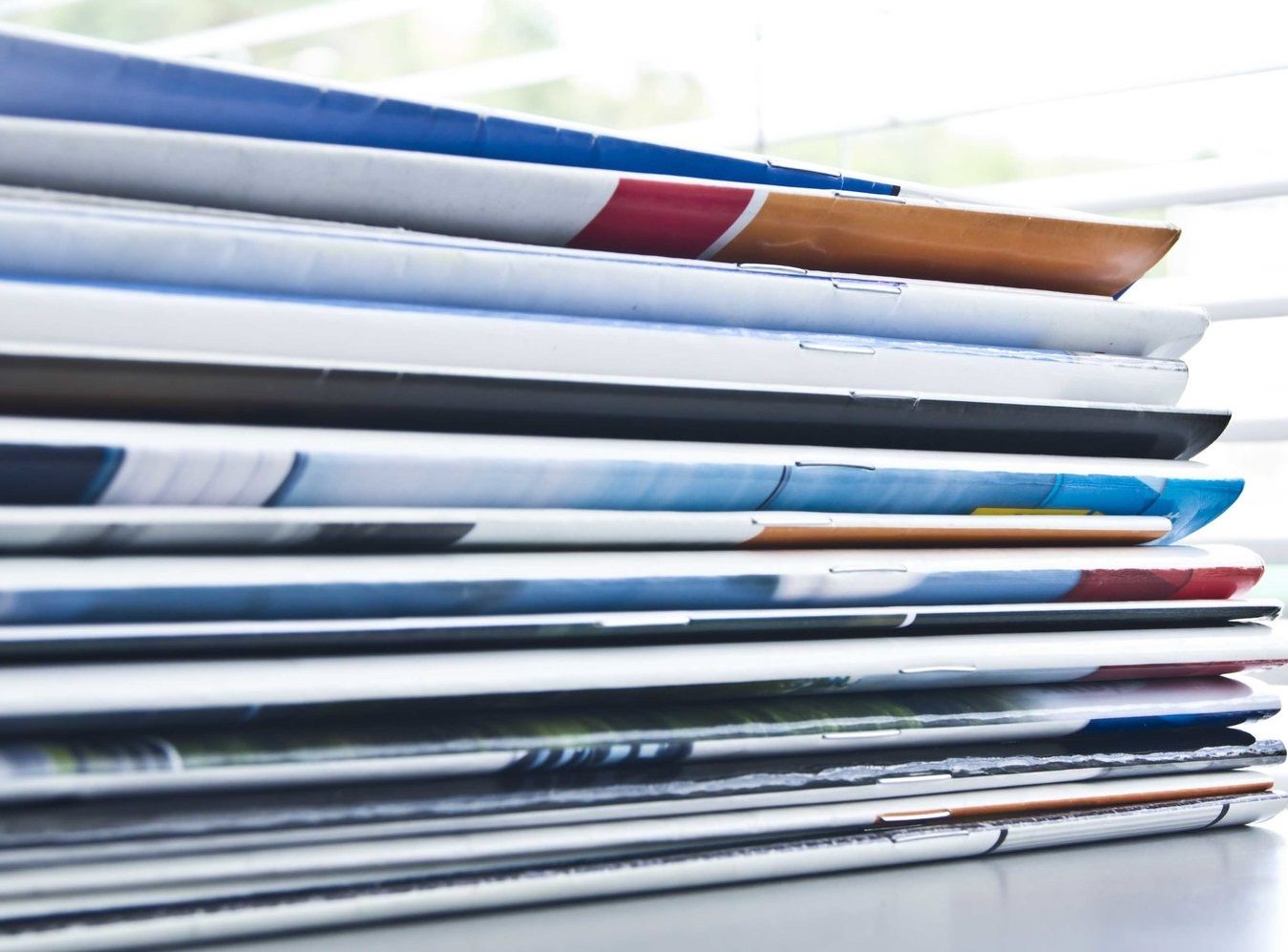
The Saddle Stitch Binding method uses wire staples to secure a book's cover and pages. After the interior page sheets and cover have been printed, they are folded in half.
The folded interior sheets are then assembled
one inside the other in the proper order. Each folded sheet creates four pages
of the book. The folded cover sheet is applied last so that it encases the compiled
interior sheets.
Starting from the outside, several wire staples are then driven through the fold line of the assembled sheets. The staples first penetrate the cover, then every interior sheet in succession until they pierce the innermost sheet. The staples are then cinched tight in the fold line of the innermost sheet (center spread).
The staples hold the pages and cover securely together, with the stapled
fold line of the assembly forming the book's spine. After the book is stapled,
the open edge of the book may be trimmed slightly, if needed.
Perfect Bound vs Saddle Stitch - A Comparison of Features
Page Count - perfect binding is ideal for books with medium to higher page counts, but is not recommended for books thinner than .125". This is because the glue needs at least .125" of bonding surface to ensure strong adhesion. Conversely, saddle-stitch binding is ideal for lower page counts only. This is because staples can only bind a given number of sheets. Theoretically, binding staples can join over 100 pages. But from a practical standpoint, it is better to limit the page count of a saddle-stitched book to around 60 pages so the books will lie flat and look professional.
Page Construction - because each sheet (leaf) within a perfect
bound book has two sides, each sheet creates two pages. Thus, the page count of
a perfect bound book, including any blank pages, will always be divisible by 2.
Because saddle-stitched books are created from folded sheets, each folded sheet
creates four pages of the book. So the page count of a saddle-stitched book,
including any blank pages, will always be divisible by 4.
Cover Construction - both perfect bound and saddle-stitched
books have a one-piece cover that wraps around the pages. The wraparound cover allows
a continuous color or design to extend from the back cover to the front, if so
desired. Also, both binding styles generally use a cover that is made from
heavier cardstock, but saddle-stich books are sometimes created as "self-cover"
books. Self-cover means the cover is the exact same paper (weight and type) as
the interior pages.
Spine - Perfect bound books have a flat spine. In most
cases, the spine is wide enough to be printed with the book's title, author
name, and other important information. This helps to identify the book whether
it is lying horizontally in a stack or standing upright in a bookcase. Alternatively,
the saddle-stitch binding method does not create a flat spine, nor is the spine
printable.
Crossover Images - images that span two adjacent pages are
disrupted somewhat by the deeper gutter of a perfect bound book. Crossover
images have less disruption with saddle stitch binding. The two centermost
pages of a saddle-stitch book will actually have zero disruption because they
are printed on the same piece of paper.
Stackability - perfect bound books are known for their uniform
thickness, which allows them to stack perfectly on a flat surface.
Saddle-stitch books, especially those that are nearing maximum page capacity,
tend not to lie as flat. In addition, the rigid spine and square base of a
perfect bound book helps it stand upright in a bookcase, whereas
saddle-stitched books are not quite as suitable for a vertical posture.
Durability - the cover of both binding styles can have an
optional clear coat or laminate applied, which will boost resilience and increase
longevity. Regarding the resistance to page pull-out (which is especially important
for books used by children) perfect binding has the advantage, especially when
Polyurethane Reactive (PUR) glue is used.
Cost - when comparing books of similar page counts, saddle
stitch binding will be less expensive because it is a simpler process and there
are fewer production steps. That said, both binding styles are actually very
affordable.
Lead Time - saddle-stitching is not only a simpler and
quicker process, there is no waiting for adhesive to cure since the books are
mechanically fastened by wire staples. Hence, saddle stitch book orders can usually
be completed a few days quicker than perfect bound books.
Book printing is one of Color Vision's specialties, so whether your book project calls for perfect binding, saddle stitching, or any other softcover binding style, we can definitely help! Just give us a call at 800-543-6299 when you're ready to discuss your project.
Or, if you know
your specs and are ready for a quote, you can access our Quote Request form by
clicking here. We look forward to assisting with your next book or booklet
project!
Related Articles
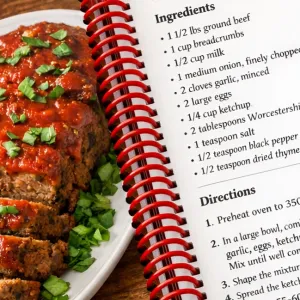
Which Book Projects Benefit From Being Spiral Bound?
Read This Article
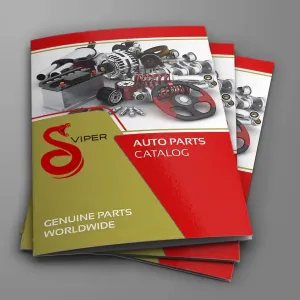
Booklet Catalogs: Why is this Catalog Format so Popular?
Read This Article
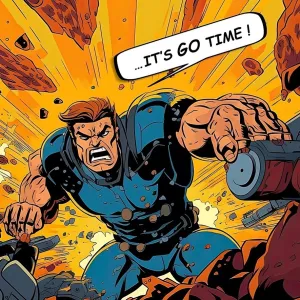
Creating a Comic Book? Here’s some Advice from a Printer
Read This Article

Perfect Binding vs PUR Binding: What is the Difference?
Read This Article